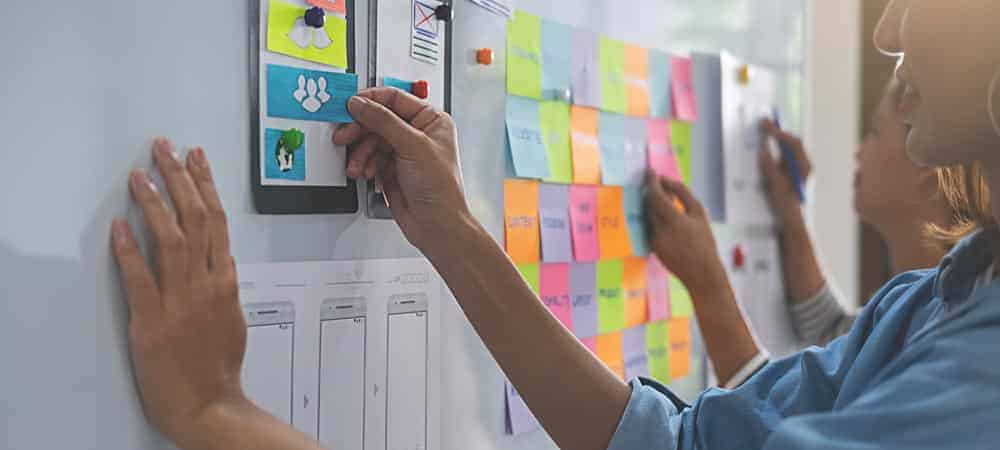UX design often means a more colorful user interface – but is the product therefore also more user friendly?
Ask yourself the following question: Imagine you are using a software for the very first time. Are you happier with your experience because the user interface has a nice color scheme? You are probably more concerned with how it compares to your existing solution in terms of speed and simplicity. Therefore, we have to ask ourselves another question: Why is it that, despite knowing we ourselves wouldn’t be content with it, we still think that other users, for example our employees that have to use a new self service as Fiori app, will be happy with some nice colors and fancy graphics instead of a modern user experience?
Lack of user acceptance is a relevant risk to the success of software projects. How do we get representative results in the design phase in order to be able to create prototypes of comprehensive functionalities and usability?
UX design needs to focus on future users
UX design first and foremost means identifying all necessary functionalities of the new software and create suitable designs for the interfaces between users and the system. This should not be a guessing game, however. User requirements instead have to be based on empirical findings concerning the context of use of future customers. The context of use objectively and exhaustively describes task models, personas, goals, available resources and environmental influences of future users.
Observing and talking to the target demo is therefore indispensable. This includes but is not limited to observing employees at their desks while they use the current software to accomplish their daily tasks and methodically interviewing future users about their tasks, goals and expectations.
This doesn’t mean that all users’ expectations have to be applied to the application’s development. Prioritizing wishes and evaluating organizational as well as legal requirements are equally important skills of UX designers. During the implementation, every decision about new functionalities, designs, positioning and naming of UI elements has to be based on precise results of the context of use analysis.
A tried-and-tested rule also applies here: speculation often leads us astray, but asking questions shows us the right way.
Listen to your users
In brief: Act empathetically and listen to those who are supposed to use your new solution to accomplish their daily tasks. Learn from your future users what the new solution needs to be capable of (master/student model). This approach offers companies the chance to recognize conceptual mistakes early on and validate design decisions based on user feedback. Even rough suggestions at a solution, for example paper prototypes, offer cost-efficient possibilities to quickly test different designs.
The goal is to only start programming the solution if it has reached its optimal, ideal state. This state is reached after design testing, if there is a high probability that user acceptance of identified priorities are considered in the product’s design (minimum usable product).
To rollout software in laborious, time-consuming projects without first looking at the context of use in companies can cause inappropriately high costs due to late corrections in an already programmed solution.
Considering all of these different aspects, “Everything will look better!” is not an adequate answer to the question of which economic benefits UX design for SAP projects brings. A more realistic answer: UX design boosts acceptance of digitalization projects. If employees are allowed to and even encouraged to actively work on corporate changes, they will have an easier time accepting the subsequent disruption.
UX design can accelerate development and reduces costs. Even though the user-focused approach makes the implementation more laborious, developers benefit from precise design templates and a validated use case. The time from conception to rollout can consequently be reduced.
In conclusion, UX design has an important role to play in making the right decisions in order to create modern and cost-efficient software solutions.





















Add Comment